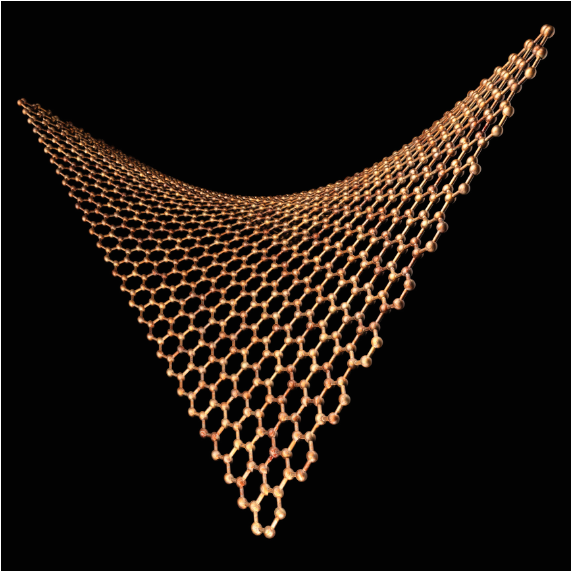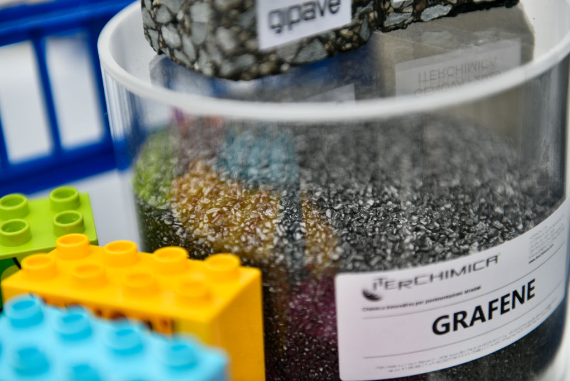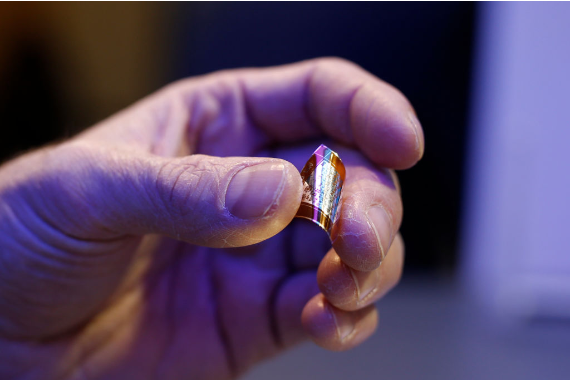Since graphene was formally discovered in 2004, its name has been so often associated with the idea of a “miracle material” that one might think it was already in use everywhere, and perhaps this has contributed to it becoming a fetish of conspiracy theorists. The truth is that, while lists of its many uses abound, it is always talked about in terms of “potential applications” for which it is the “ideal candidate”; today its use remains marginal and experimental. But this won’t always be the case. But before the predicted take-off of graphene arrives, we should ask ourselves: could this nanomaterial become a future toxic pollutant?

Theorised in the 1940s and possibly first observed under an electron microscope in 1962 by Hanns-Peter Boehm—who coined its name—it was not until 2004 that Andre Geim and Konstantin Novoselov obtained it in a laboratory at the University of Manchester, using a graphite stone, the material used in pencils, and adhesive tape to peel off the thinnest layer possible. The end result was an ultra-thin sheet of carbon with a hexagonal structure and only one atom thick, the first two-dimensional material. Geim and Novoselov were awarded the 2010 Nobel Prize in Physics for their work.
Graphene has several properties that make it the wonder material it has been heralded as: it’s 200 times stronger than a sheet of steel of the same thickness; it’s transparent, light and flexible; it’s an excellent conductor of heat and electricity, withstanding temperatures of up to 700 °C; and it’s resistant to acids. These properties mean it has many potential applications in fields as diverse as electronics, energy, biomedicine, composites, water desalination, decontamination and others. The problem, says Kevin Wyss of Rice University, is that “it is still incredibly difficult and expensive to manufacture at commercial scales.” As a result, there are still few products that contain it, and few large companies that use it routinely. In Wyss’s words, “current production can barely cover experimentation, much less widespread use.”
New manufacturing techniques
The exfoliation of graphite, based on Geim and Novoselov’s principle, produces imperfect and low-quality graphene. Expanding its uses will require higher quality graphene, which is obtained by synthesis processes such as chemical vapour deposition, but takes hours to produce even one hundred thousandth of a gram, according to Wyss.
There seems little doubt that graphene is set to grow exponentially thanks to new manufacturing techniques such as the Joule effect—where an electric current is passed through the material to rearrange the carbon bonds—which can produce gram quantities of graphene in less than a second from common carbon sources such as fossil fuels or waste from food, rubber or plastics. According to Graphene Flagship, one of the EU’s major scientific initiatives, the global graphene market is growing steadily, and is expected to soar in the next few years from estimated revenues of $380 million in 2022 to $1.5 billion in 2027.

But the case of the insecticide DDT reminds us that sometimes a seemingly innocuous product, hailed as a miracle product in the mid-20th century, can turn out to be an environmental disaster. Could something similar happen with graphene? First of all, what will be the environmental impact of its production if it becomes widespread? Experts stress that the source of the electricity is key: renewable energy will reduce the climate costs. According to Graphene Flagship, the environmental impacts are influenced by many factors, from the raw material to the production method, but there will always be pollution.
In particular, the Joule effect applied to biomass waste reduces the water and carbon footprints by more than 90% compared to other manufacturing processes, opening the door to graphene that is 10 times cheaper and carbon neutral. The applications of graphene can also be environmentally beneficial: for example, mixing it with concrete can reduce the amount of construction material needed by up to 30%, while also reducing emissions.
Impact on health and the environment
What about its presence in the environment? Several possible mechanisms of toxicity have been proposed, including cellular stress, inflammation and DNA damage, as well as antibacterial properties. Graphene Flagship scientists report the possible formation of lung granulomas—small swollen areas—through inhalation, depending on particle size, which is consistent with damage to cells by graphene’s cutting edges.

However, the first clinical trial to study acute cardiopulmonary responses to graphene inhalation, published in 2024, concludes that “graphene oxide nanosheet exposure was well tolerated with no adverse effects” on heart rate, blood pressure, lung function and inflammatory markers, regardless of particle size. The study is the culmination of a decade of research on mice and human tissues, but the researchers warn that the results are still preliminary. A slight increase in blood clotting was detected in a laboratory arterial model. Moreover, this is only a short-term trial, and the environmental transformation of graphene nanomaterials is still an unknown.
According to study co-leader Mark Miller of the University of Edinburgh, this is “a huge step forward in our understanding of how graphene could affect the body,” but much more research will be needed to ensure that these nanomaterials are manufactured “in a way that is safe before we they can be used more widely in our lives.” Will we ever be able to guarantee that graphene is safe and sustainable before it becomes ubiquitous?
Comments on this publication